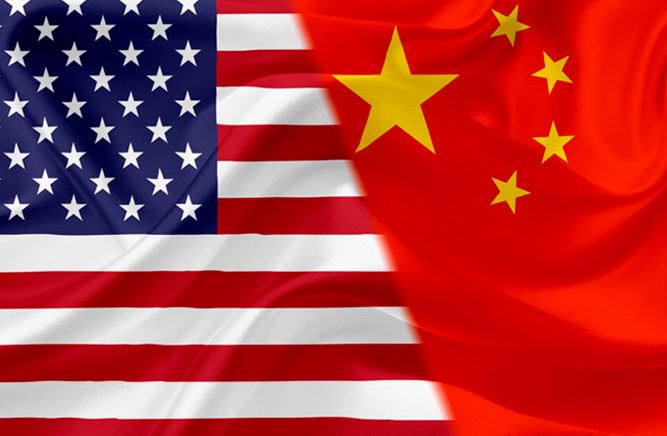
Global financial markets took a pause in May and experienced a pullback after a very strong start to the year as U.S.-China trade tensions came back to the forefront. With no resolution to the trade conflict and more tariffs being invoked by each country, concerns regarding the tariffs’ negative impact on global economic growth was brought back to the surface. Global markets retreated between 3%-7% for the month of May, but have since bounced back in June. Given the extent of the rally from the December 2018 lows, it is healthy for the markets to take a breather and digest the gains year to date. In the short term, markets are likely to be bound in a trading range by two opposing forces.
On the one hand, global central banks remain accommodative with their monetary policies, giving markets a safety net. Recall that lower interest rates are favourable for businesses (lower cost of borrowing) and consumer spending (more disposable income). With the recent softening of macroeconomic data, the chance of a rate cut has increased considerably. The market is now projecting the probability of a U.S. rate cut at 86% by July 2019 and 99% by December 2019, while a rate cut in Canada sits at a 55% likelihood by year end*. Furthermore, the European Central Bank (ECB) recently left rates unchanged and signalled that the earliest date for a rate increase would be mid-2020 instead of 2019. Lastly, China has also increased stimulus efforts to combat its slowing economy. In short, supportive central banks are a tailwind for the markets.
On the other hand, trade tensions and tariffs, if prolonged, are a drag on economic growth and corporate earnings and will reduce investor optimism and risk appetite over time. As mentioned, we have already seen softening of macroeconomic data recently. President Trump and President Xi are expected to meet at the upcoming G20 Summit on June 28-29th in Osaka, Japan. This gives both sides an opportunity to advance trade negotiations, but lack of progress would contribute to negative sentiment for the markets. Our sense is that this trade tug of war will be prolonged due to the reasons below.
It’s becoming increasingly apparent that the U.S.-China trade conflict is not about the past, it’s about the future. It goes beyond traditional issues of trade imbalances and is a strategic positioning by each side for future technological dominance that will shape the power of each country for decades to come. Trade imbalances of the past are relatively easy to fix, but sharing technological prowess into the future is a much more complex issue. From the U.S.’s perspective, the headline policy is to reduce trade deficits, but the strategy (i.e. real intent) is to limit technology development by China.
This mainly stems from an initiative launched by China in May 2015 known as Made in China 2025. It is a ten-year strategic plan to upgrade China from being a “factory” to an advanced industrialized economy, driven by technological innovation and focusing on quality over quantity. It targets ten advanced-technology manufacturing industries, namely: (1) advanced information technology; (2) robotics and automated machine tools; (3) aircraft and aircraft components; (4) maritime vessels and marine engineering equipment; (5) advanced rail equipment; (6) new energy vehicles; (7) electrical generation and transmission equipment; (8) agricultural machinery and equipment; (9) new materials; and (10) pharmaceuticals and advanced medical devices. The Chinese government has pledged subsidies equaling to $300 billion U.S. dollars (USD) to domestic firms to achieve its plan. In essence, the Made in China 2025 initiative competes with the Made in America paradigm in terms of technology and innovation.
In response, the U.S. launched an investigation in August 2017 into China’s trade practices under Section 301 of the U.S. Trade Act of 1974. Section 301 is a principal enforcement tool that can be used to address a variety of unfair acts, policies, and practices by U.S. trading partners. Requests made by the U.S. to China include reducing the bilateral trade imbalance by $200 billion USD over two years, strengthening China’s intellectual property (IP) laws, improving market access into China for U.S. companies, halting China’s government subsidies for the Made in China 2025 initiative and so on. The U.S. is flexing its muscles in the trade negotiations through the systematic increase of tariffs and the component export ban to Chinese telecommunications firm Huawei, which is one of China’s most valuable companies. For now, high-tech Chinese firms are still largely dependent on U.S. firms as part of their supply chain, so the export ban could be detrimental to Huawei. China has also increased its tariffs, but has less retaliation tools than the U.S.
At this time, it appears that China is willing to buy more U.S. goods and services to reduce the trade imbalance, but there is less clarity on negotiation progress on the technology front. The meeting between the U.S. and China at the upcoming G20 Summit will be pivotal for this trade tug of war.
*Source: Bloomberg
Ethan Dang, CFA, MBA is a Portfolio Manager at McIver Capital Management at Canaccord Genuity.
CLICK HERE to receive the McIver Capital High Net Worth Newsletter direct to your Inbox or to request account or client information from the Mcilver Capital Management team.












